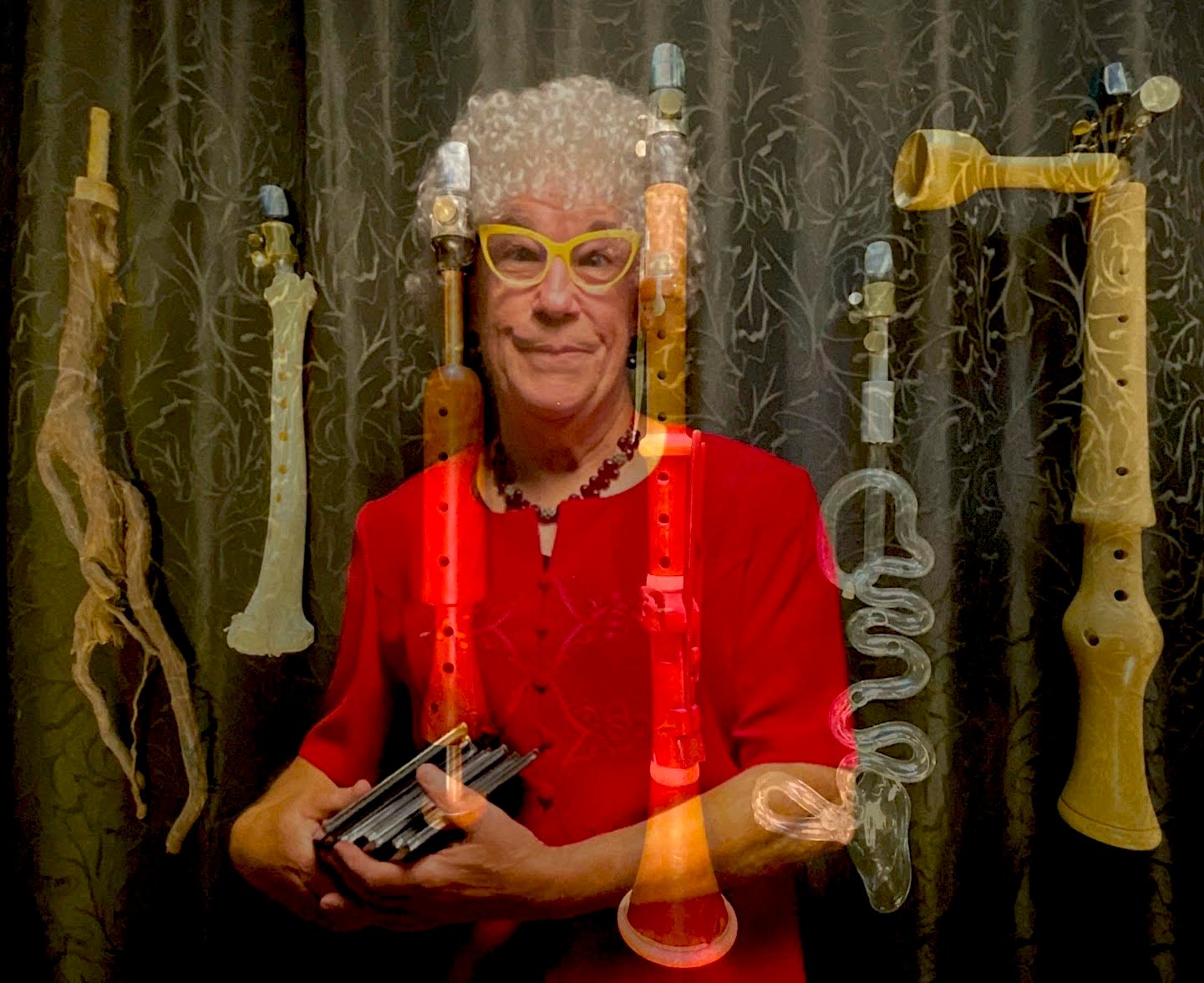This solo show is currently in development and will launch in September 2023.
Iris Viewfinder is an archivist. Someone who conducts thorough research on different records, documents and media, then appraises their value and creates a catalog for other people to access. According to Hilary Jenkinson’s influential A Manual of Archive Administration (1922), the archivist was simply the obedient and silent handmaiden of the historian. So you may quite rightly ask “what on earth is she doing on stage performing in front of an audience”? She’s asking herself the same question. It certainly is not her default position to be standing in front of an audience speaking in Public. In fact, she is by nature quite a shy person and it took a great deal of persuading to pull her out of her comfort zone.
Last year she was working on a project at the National Museum of Slovenia in Ljubljana, archiving research into the oldest musical instrument in the world, a 60,000-year-old Neanderthal flute, a treasure of global significance. It was discovered in Divje babe cave near Cerkno in 1995 during systematic excavations led by Ivan Turk and has been declared by experts to have been made by Neanderthals. This work led her to another research project by paleo-musicologists Tekl und Herzwander who had unearthed a bone clarinet (playfully named the Neandernet) in the same Divje babe cave earlier that year (2022). The Neandernet had a very worn, but obviously modern mouthpiece which made absolutely no sense. To establish the age of both the bone and the mouthpiece they had them carbon dated and discovered that the bone was around 60,000 years old and the mouthpiece was from 2078AD (55 years in the future). There must be some mistake they thought. After further detailed study they hypothesised the unbelievable possibility that certain objects had been delivered from the year 2078AD (or sometime after that) back to the past via time travel, possibly as part of a research project to evaluate the effect on human cultural development of ‘temporal artifact insertion’. Of course, this theory is still not widely accepted by their peers but it led Iris to look for more examples of research projects outside the mainstream that were searching for artifacts that may have travelled back in time. It also led her to study the complete history of the clarinet and from that research create ‘Herstory of the clarinet’.

